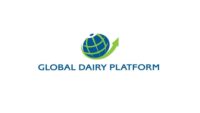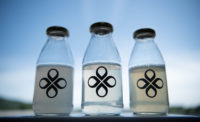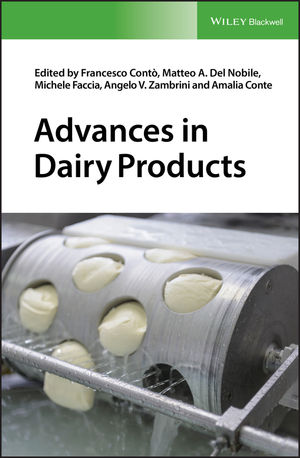US dairy industry advances journey to net zero carbon emissions by 2050
Nestlé makes commitment to help make sustainability more accessible and affordable to farmers.

Signaling bold climate change action, the Innovation Center for U.S. Dairy, Rosemont, Ill., unveiled the Net Zero Initiative, an industrywide effort that will help U.S. dairy farms of all sizes and geographies implement new technologies and adopt economically viable practices. The initiative is a critical component of U.S. dairy’s environmental stewardship goals, endorsed by dairy industry leaders and farmers, to achieve carbon neutrality, optimized water usage and improved water quality by 2050.
“The U.S. dairy community has been working together to provide the world with responsibly-produced, nutritious dairy foods,” said Mike Haddad, chairman, Innovation Center for U.S. Dairy. “With the entire dairy community at the table — from farmers and cooperatives to processors, household brands and retailers — we’re leveraging U.S. dairy’s innovation, diversity and scale to drive continued environmental progress and create a more sustainable planet for future generations.”
The Innovation Center for U.S. Dairy also announced a key milestone on its journey toward carbon neutrality — an up to $10 million commitment and multi-year partnership with Nestlé to support the Net Zero Initiative and scale access to environmental practices and resources on farms across the country.
“Supporting and enabling farmers through the Net Zero Initiative has the potential to transform the dairy industry,” said Jim Wells, chief supply chain officer for Arlington, Va.-based Nestlé USA. “Scaling up climate-smart agricultural initiatives is key to Nestlé’s ambition to achieve net zero greenhouse gas (GHG) emissions by 2050 and will help reduce the carbon footprint of many of our brands. We are excited to collaborate with U.S. dairy and our suppliers to contribute to an even more sustainable dairy supply chain.”
The Innovation Center for U.S. Dairy — a forum that convenes dairy farmers and industry stakeholders across the value chain to align on shared social responsibility priorities — said it built on a decades-long commitment to responsible dairy production in developing the 2050 Environmental Stewardship Goals. Leveraging a rigorous third-party reviewed materiality assessment, the industry prioritized the most pressing areas of environmental sustainability as the foundation for its goals:
- Become carbon neutral or better.
- Optimize water use while maximizing recycling.
- Improve water quality by optimizing utilization of manure and nutrients.
In 2008, U.S. dairy was the first agricultural sector to commission a life cycle assessment on fluid milk, which showed that dairy accounts for 2% of total GHG emissions in the United States, the Innovation Center for U.S. Dairy said. In fact, due to innovative practices in cow health, improved feed and genetics, and modern management practices, the environmental impact of producing a gallon of milk in 2017 has shrunk significantly from 2007, requiring 30% less water, 21% less land and a 19% smaller carbon footprint1.
The Net Zero Initiative is a collaboration of dairy organizations and represents a critical pathway on U.S. dairy’s sustainability journey. Many of the practices and technologies needed to reach the industry’s goals largely exist but require further research and development and overall greater accessibility across farms of all sizes and geographies. Through foundational science, on-farm pilots and development of new product markets, the Net Zero Initiative aims to knock down barriers and create incentives for farmers that will lead to economic viability and positive environmental impact, the Innovation Center for U.S. Dairy said.
Nestlé is the first of what the U.S. dairy community hopes will be many partners joining the Net Zero Initiative, contributing funding and expertise to help propel the entire industry’s progress toward a more sustainable future. With brands such as Carnation, Stouffer’s and DiGiorno, Nestlé brings a wealth of knowledge and industry leadership to the table, as well as an earnest commitment to supporting U.S. dairy farmers in environmental advancements and technology adoption, the Innovation Center for U.S. Dairy said. Dairy companies and farms in every state already are contributing to the goals in individual ways, and each year a select number are recognized for their positive impact with the U.S. Dairy Sustainability Awards.
The dairy community will continue to demonstrate its progress in the environment, animal care, food safety/traceability and community contributions through the U.S. Dairy Stewardship Commitment. As of October 2020, 27 dairy companies representing 70% of the nation’s milk production have voluntarily adopted the U.S. Dairy Stewardship Commitment and contribute to U.S. dairy’s ability to track, aggregate and report on progress.
“We know a lot more is possible — proven science and evidence from dairy’s existing best practices tells us we can get to net zero. This is not only good for dairy farmers, it’s also good for all businesses that serve dairy, the communities where we farm and the millions of people who enjoy dairy every day,” added Haddad.
For more information about U.S. dairy’s sustainability journey, visit USDairy.com/Sustainability.
Looking for a reprint of this article?
From high-res PDFs to custom plaques, order your copy today!



.jpg?height=200&t=1715113716&width=200)




